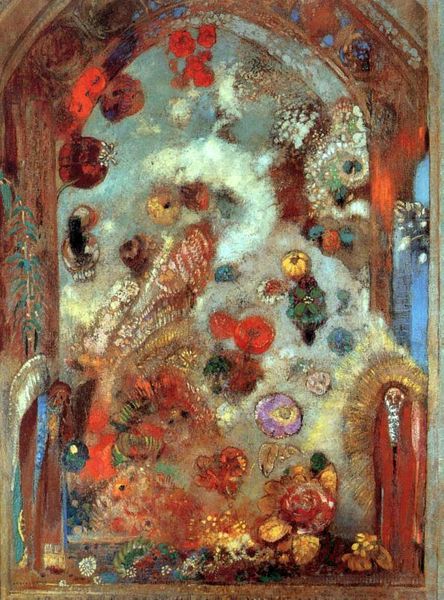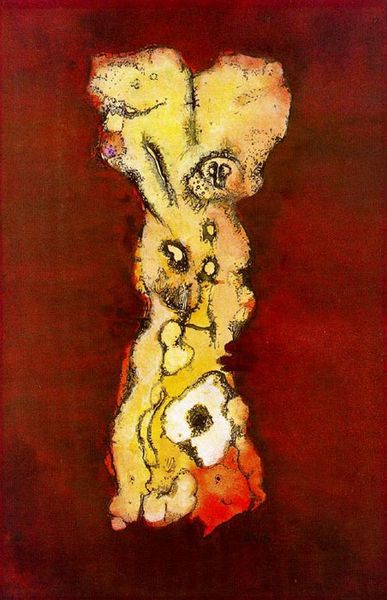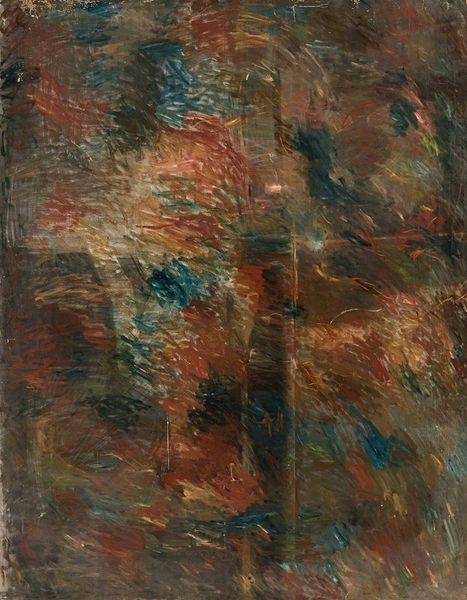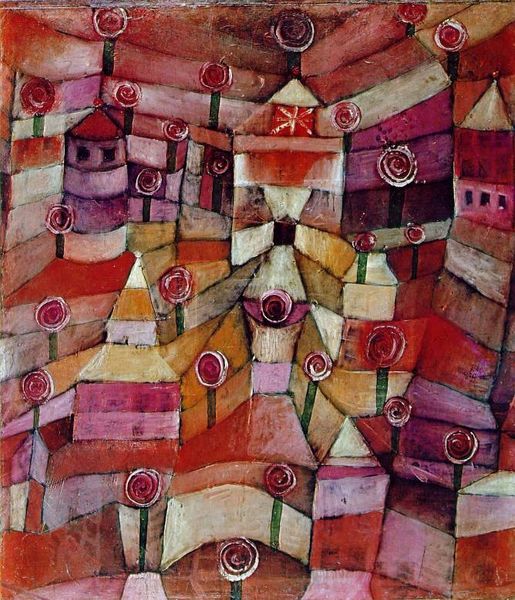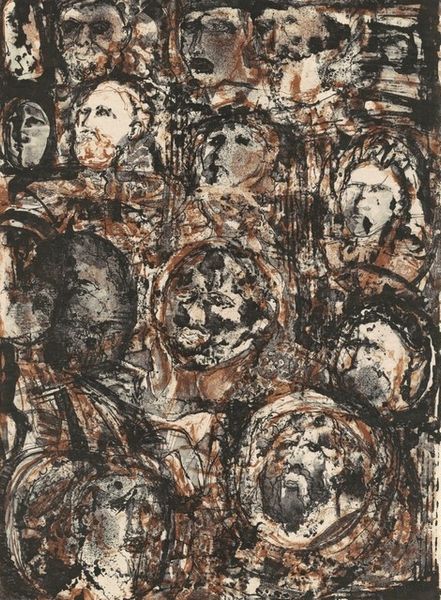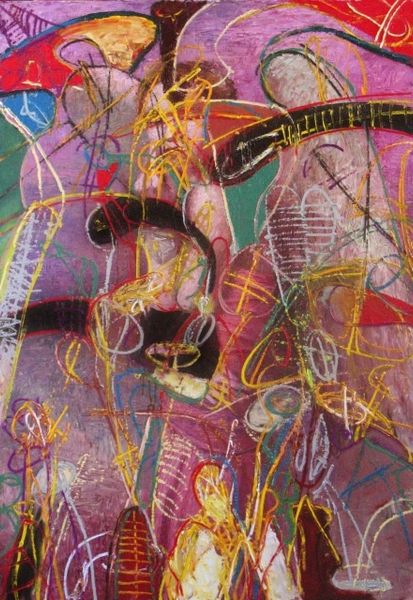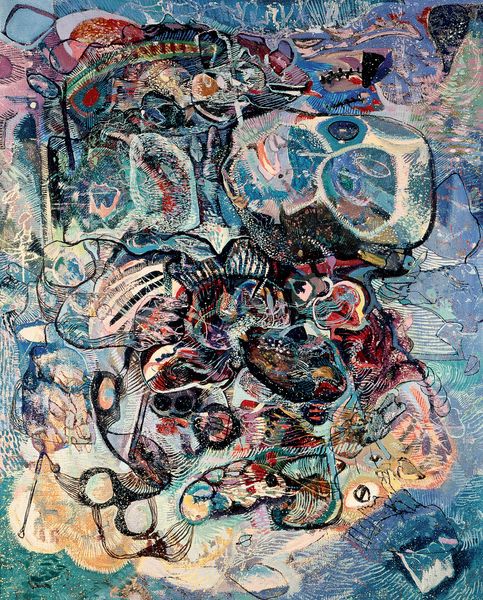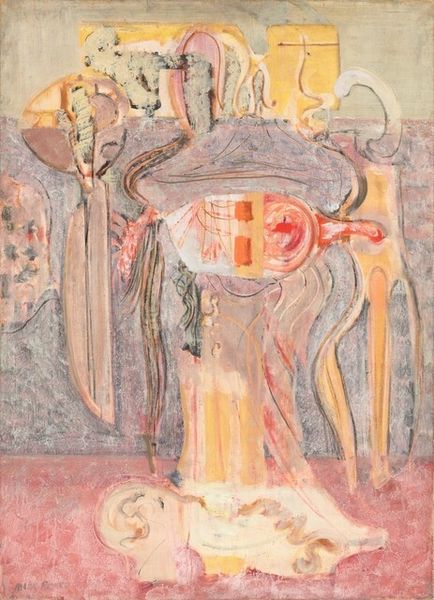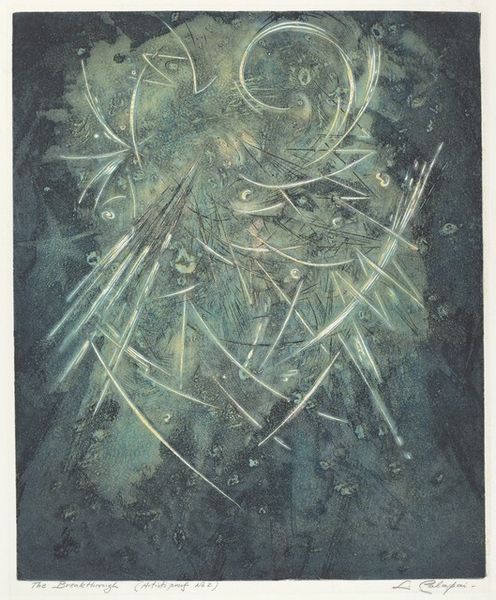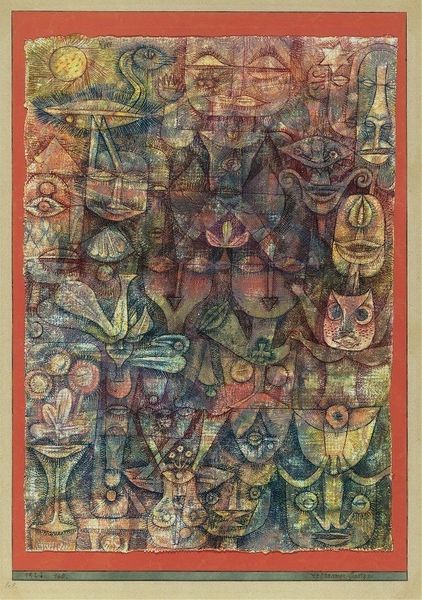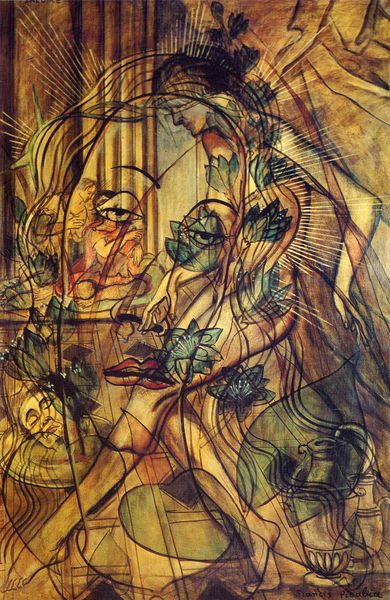
Copyright: Richard Pousette-Dart,Fair Use
Editor: Richard Pousette-Dart's 1948 oil painting, "The Atom, One World," has a distinctly primal feel. I see what looks like a face emerging from a chaotic field of color and frantic mark-making. It makes me feel a little uneasy, but I'm drawn to it. What do you see in this piece? Curator: I see a profound response to the post-war era, a time marked by the anxieties of the atomic age. Pousette-Dart created this shortly after the end of WWII; the title itself reveals his concern with global interconnectedness but also the looming threat of nuclear annihilation. Consider the face you mentioned - does it seem comforting or confrontational? Editor: Confrontational, definitely. There's a weight to its gaze and a sort of disturbing imbalance. Curator: Precisely. The swirling brushstrokes and the unsettling asymmetry can be interpreted as a visual representation of the instability and fragmentation of the world at that time. The use of abstraction is key here; it allows Pousette-Dart to express these complex feelings that lie beyond representation, feelings related to trauma and fear but also potential and unity, ‘one world,’ as he titles the artwork. Does knowing this context shift your perspective on the artwork? Editor: Absolutely. It makes me think about the responsibilities artists have to respond to their own historical moments. I can see a certain universal and perhaps even cautionary undertone of collective responsibility and existential anxieties when examining his approach to abstract expressionism. Curator: Indeed. It reveals how art can serve as a critical mirror, reflecting both the visible realities and the intangible emotional landscapes of society and power dynamics. It also illustrates the interconnected relationship between politics, identity and artistic production, something that is key to the art from this period. Editor: I see what you mean. I didn’t initially consider all the layers within the mark-making itself and will consider the identity politics in place within it in the future. Thanks for the insightful context!
Comments
No comments
Be the first to comment and join the conversation on the ultimate creative platform.
